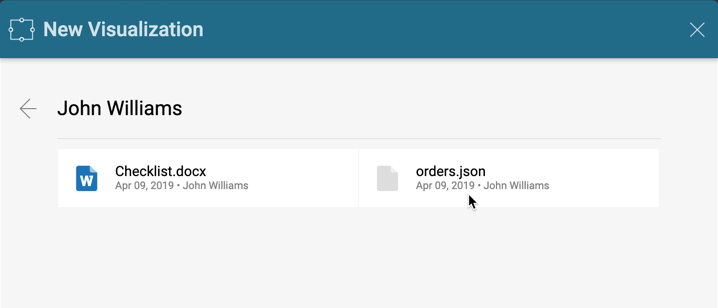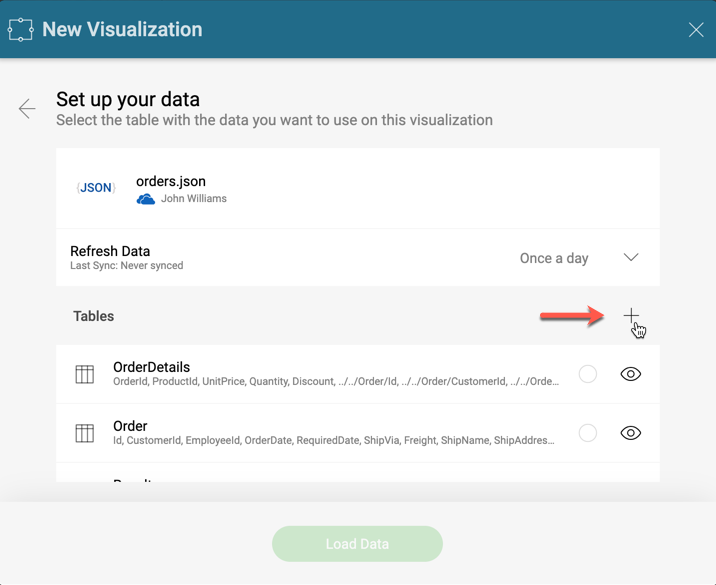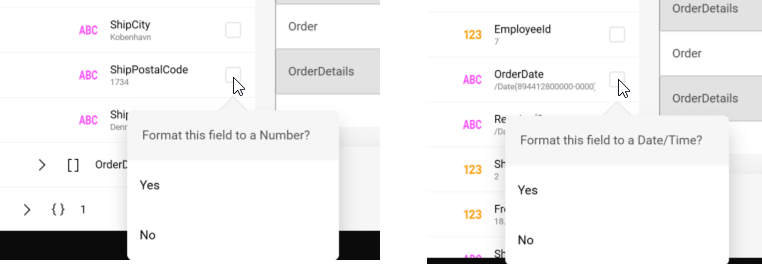
The JSON format is fully supported in Reveal as your visualizations can consume data from any JSON file.
After reading your JSON file format, Reveal provides you with possible data structures you may want to use. In addition, there is an Advanced Selection mode where you can choose a custom data structure.
JSON (JavaScript Object Notation) is a self-describing lightweight format for storing and exchanging data.
Format highlights:
JSON, as a format, can be used to represent many different structures of data.
Data is always arranged as name/value pairs, separated by commas.
Data types' notation includes: curly braces {} for objects and square brackets [] for arrays.
Follow these steps to create a new visualization that consumes data from your JSON file:
Make your file available
Upload the JSON file to one of your storage providers, so you can later access it from Reveal. You can choose between the following available options: Dropbox, OneDrive, Box, Google Drive, and SharePoint.
Create a new visualization.
Within your dashboard, create the visualization that will consume data from the JSON file.
Locate your file.
Choose the storage provider with the file and provide your login credentials.
Navigate the provider and select your JSON file.

Choose the data structure you want.
After scanning the file, Reveal will show you a list of possible data structures for you to choose.

If the list does not include the data structure you want, use the Advanced Selection mode where you can choose a custom data structure.
Click/Tap Load Data.
Once you selected the data structure, click/tap the Load Data button to continue to the Visualizations Editor.

JSON files can be used to represent many different data structures. Because of this, Reveal allows you to choose a custom data structure for you to work with. After selecting the data columns you want to work with, you are able to build your visualization upon them.
Open the Advanced Selection mode.
Click/Tap the + button to get access to the Advanced Selection screen.

Navigate the JSON Tree.
Expand the nodes and select the deepest level where you want to select the data.

Select the tree elements and fields you want.
You need to select a tree element (object [] or array {}) to enable child selection.
(Optional) Format text fields to Date/Time or Number
When selecting a field, Reveal reads its values, autodetects the optimal format, and presents a dialog where you can choose what to do.

Click/Tap Create Table.
Once you selected your custom data structure, click/tap the Create Table button to continue to the Visualizations Editor.
